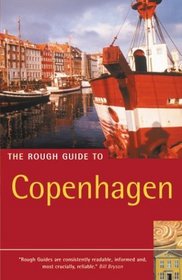Search -
The Rough Guide to Copenhagen 2 (Rough Guide Travel Guides)
The Rough Guide to Copenhagen 2 - Rough Guide Travel Guides
Author:
INTRODUCTION — Copenhagen (Kobenhavn) is Scandinavia’s most vibrant and affordable capital, and one of Europe’s most user-friendly cities. Small and welcoming, it’s a place where people rather than cars set the pace, as evidenced by the multitude of pavement cafés and the number of thoroughfares that have been given over to pe... more »
Author:
INTRODUCTION — Copenhagen (Kobenhavn) is Scandinavia’s most vibrant and affordable capital, and one of Europe’s most user-friendly cities. Small and welcoming, it’s a place where people rather than cars set the pace, as evidenced by the multitude of pavement cafés and the number of thoroughfares that have been given over to pe... more »
ISBN-13: 9781843530701
ISBN-10: 1843530708
Publication Date: 2/16/2004
Pages: 208
Edition: 2nd Pocket
Rating: ?
ISBN-10: 1843530708
Publication Date: 2/16/2004
Pages: 208
Edition: 2nd Pocket
Rating: ?
0 stars, based on 0 rating
Genres:




